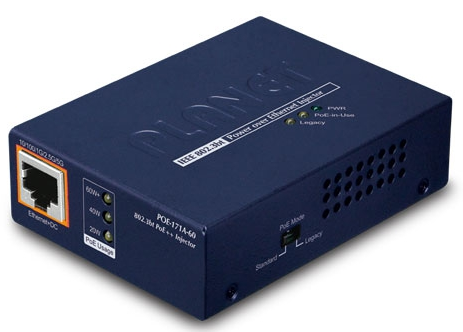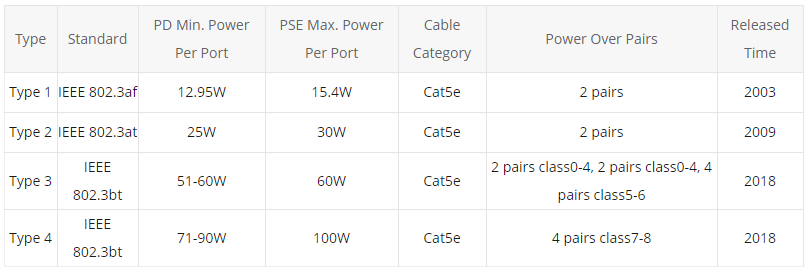URC HDA devices and software provide countless options to configure and optimize audio settings to achieve performance and flexibility for almost any application.
The following article helps you understand the options for powering an HDA-130 with PoE+, PoE++ or using the 48VDC Power Adapter.
HDA-130 front panel (see image below):

Powering an HDA-130 with PoE+, PoE++ or the 48VDC Power Adapter
The HDA-130 Amplifier is a single zone, two channel amplifier that can be powered using one of the following methods:
- PoE+
- PoE++
- 48 Volt DC Adapter (supplied in box)
The HDA-130 uses a unique type of power supply that can run on as little as 15 Watts input power (PoE+). When powered by PoE+, the amplifier channels provide about 6 Watts per channel.
When powered by PoE++ or the 48 Volt DC Adapter, the HDA-130 amplifier can deliver about 30 Watts per channel. The HDA-130 has tremendous power supply headroom for loud audio passages. The HDA-130 peak power output can reach up to 80 Watts as a power “burst”.
We have tested a few PoE++ injectors and have observed varying results. Some injectors labelled “PoE++” were actually supplying the power of a “PoE+” injector, even though they are labelled “PoE++”.
A good resource for learning more about PoE ratings and detailed information on Type 1 through Type 4 PoE can be found here.
A PoE++ injector that we have tested with the HDA-130 amplifier that delivers full PoE++ power and is very dependable can be found here.
The Planet Technology POE-171A-60 is a Single-Port, multi-gigabit 802.3bt PoE++ Injector with a maximum of up to 60 watts of power output over Ethernet cabl
. (image shown below)

PoE Definitions & Specifications:
- PoE
IEEE 802.3af is also known as standard PoE or Type 1 with supply voltage of 44-57V, and supply current of 10-350mA. In this standard, the maximum power output of a port is limited to 15.4W. However, some power will be lost on the Ethernet cable during the transmission. Thus, the minimum guaranteed power available at the PD (Powered Device) is 12.95 watts per port. - PoE+
The updated IEEE 802.3at standard also named PoE+, or Type 2, which is backward-compatible with standard PoE. The supply voltage of PoE+ ranges from 50V to 57V, and the supply current can be 10-600mA. It provides up to 30W of power on each port of a PSE (Power Sourcing Equipment, such as a PoE switch). Due to power loss, the minimum output power assured on each port is 25W. - PoE++
IEEE 802.3bt is the latest PoE standard that defines two types of powering/wattage standards - Type 3 and Type 4 in the table below. They will increase the maximum PoE power by delivering more power through two or more pairs of Ethernet cables. In Type 3 and Type 4 modes, PSEs will identify the PDs and set the power accordingly to the maximum PD power, resulting in a better power-delivery system. Type 3 is also know as PoE++, which can carry up to 60W for each PoE port (minimum power ensured on each PD port is 51W) over a single RJ45 cable to power devices like videoconferencing system components.
Type 4 is named higher-power PoE. It can supply maximum power output of 100W on each PoE port (minimum power ensured on each PD port is 71W), which is suitable for devices like laptops or TVs, etc. Both the two modes of IEEE 802.3bt are backward compatible with 802.3af and 802.3at. The following table concludes the specifications of the PoE standards.

Additional Information & Resources:
A good resource for learning more about PoE ratings and detailed information on Type 1 through Type 4 PoE can be found here.
A PoE++ injector that we have tested with the HDA-130 amplifier that delivers full PoE++ power and is very dependable can be found here.
To learn more about HDA products and programming, please see the HDA Programmers Guide or the Accelerator 3 online Programming Guide.
